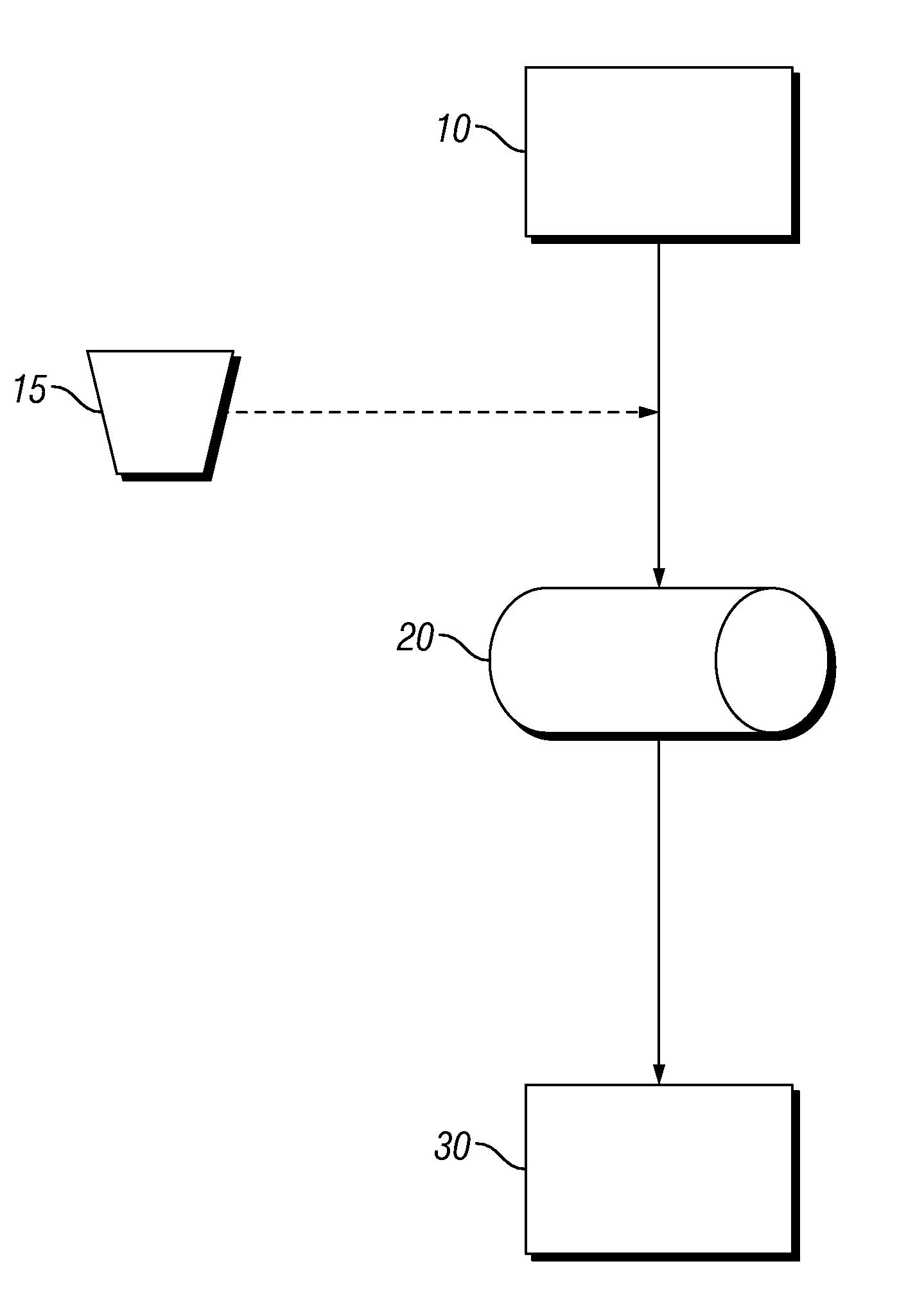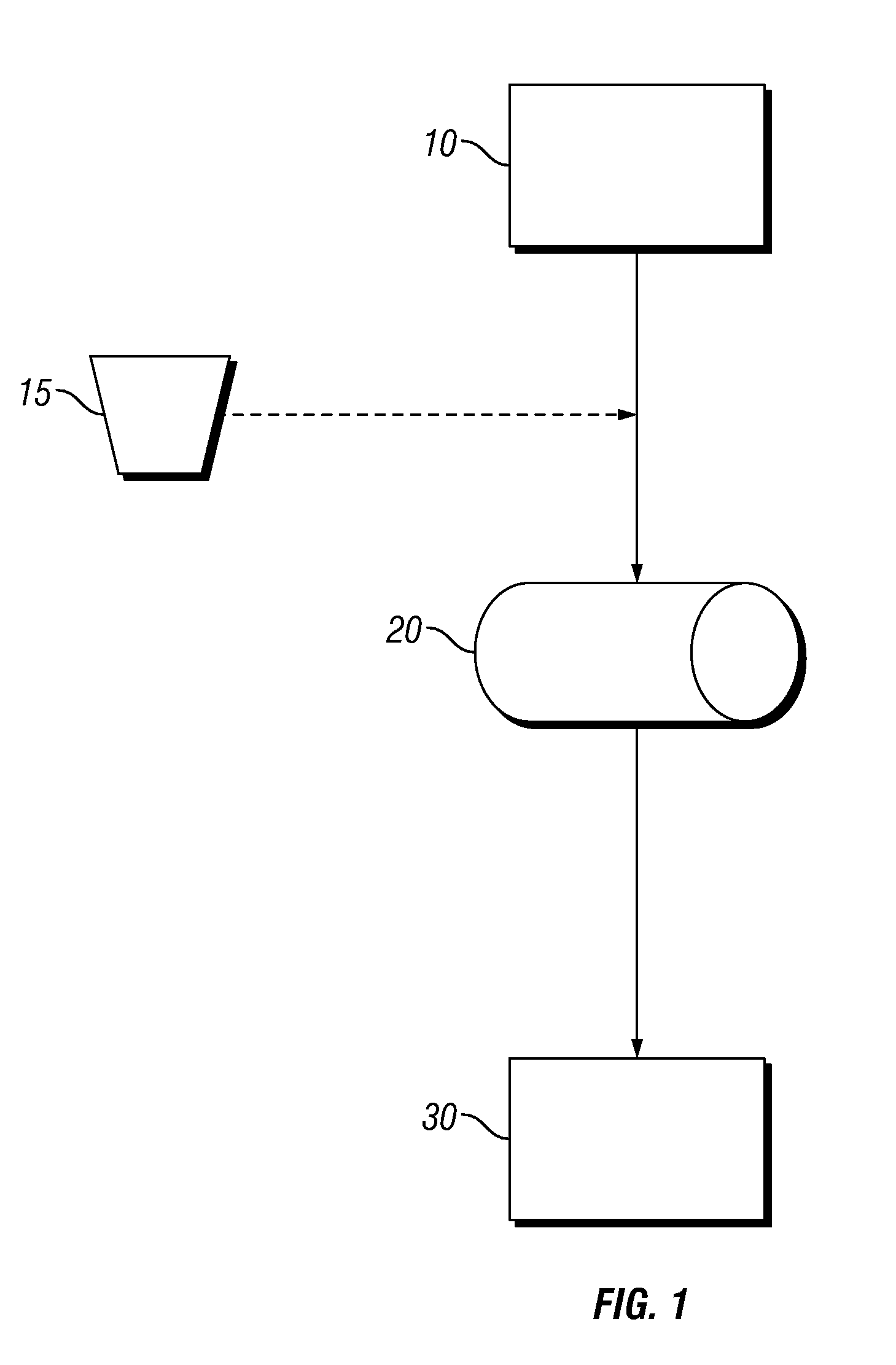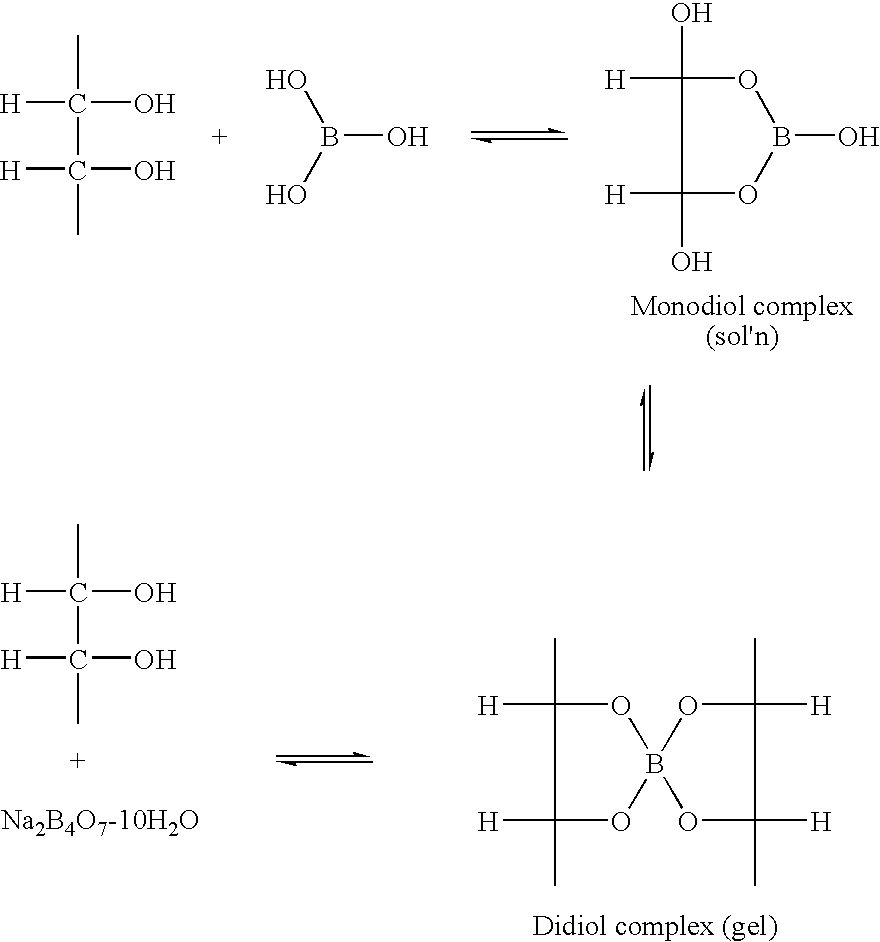Process for Drying Boron-Containing Minerals and Products Thereof
a technology for drying process and boron-containing minerals, which is applied in the direction of borates, borehole/well accessories, sealing/packing, etc., can solve the problems of product taken, expensive equipment, and inability to adapt to the situation
- Summary
- Abstract
- Description
- Claims
- Application Information
AI Technical Summary
Benefits of technology
Problems solved by technology
Method used
Image
Examples
example 1
Laboratory Drying of Boron-Containing Ores
[0050]Ulexite and colemanite samples used in the tests were obtained from the Bigadic region of Turkey. The boron-containing ores are typically received from the supplier having already been washed and crushed to about a 6-mesh particle size. Samples of the ores to be tested were ground to the desired particle size using a suitable grinding mill or sieve, such as an air classifier mill, so that the appropriate particle size distributions may be obtained, weighed to establish the initial weight prior to the drying procedure, and then dried using an indirect rotary drier. As shown in Table 1 below, the particle size distributions evaluated were at D-10, D-50, and D-90, and ranged from about 0.1 μm to about 98 μm for ulexite, and from about 0.68 μm to about 2,046 μm for colemanite.
TABLE 1Particle size distribution (average) of ore samples pre-drying.BoronD-10D-50D-90CompoundPre-dryPre-dryPre-dryColemanite4.09934.039159.088Ulexite1.4428.02235.07...
example 2
Determination of Percent Boron Increase in Dried Ores
[0053]The procedure used to determine the boron content of both the raw and post-drying borate materials was a modified NaOH titration method. Generally, a 0.20 g sample of the material to be analyzed was weighed into a suitable container, the material was transferred to an Erlenmeyer flask, and 25 mL of dilute hydrochloric acid (HCl) was added to the flask containing the sample. The sample was allowed to dissolve, and the solution was then dissolved to a temperature just under boiling, after which the solution was cooled to room temperature in an ice-bath. Upon reaching room temperature, CaCO3 (Ultracarb™ 12, available from TBC-Brinadd, Houston, Tex.) was added slowly to the solution to neutralize it, as indicated when the solution was no longer fizzing. The solution was again heated to just under boiling, cooled to room temperature, and filtered through Whatman no. 40 filter paper (or the equivalent). Methyl red indicator soluti...
example 3
Measurement of Cross-Linking in Boron-Containing Ores
[0054]The degree of cross-linking, pre- and post-drying, of several of the boron-containing ores was determined using standard methods, as described, for example, in U.S. Pat. No. 7,018,956. In general, to conduct the crosslinking tests, a 2% KCl-guar solution was prepared by dissolving 5 grams potassium chloride (KCl) in 250 ml distilled water or tap water, followed by adding 1.2 grams of fracturing fluid grade regular guar powder, such as WG-35, or the equivalent. The resulting mixture was agitated in a Waring blender for 30 to 60 minutes, to allow hydration of the guar polymer. Once the guar had completely hydrated, the pH of the guar solution was determined with a standard pH probe, and the initial temperature of the guar solution was also recorded. Typically, the initial guar mixture had a pH that was in the range from about 7.5 to about 8.0, and had an initial viscosity (as determined on a FANN® Model 35A viscometer, availab...
PUM
 Login to View More
Login to View More Abstract
Description
Claims
Application Information
 Login to View More
Login to View More - R&D
- Intellectual Property
- Life Sciences
- Materials
- Tech Scout
- Unparalleled Data Quality
- Higher Quality Content
- 60% Fewer Hallucinations
Browse by: Latest US Patents, China's latest patents, Technical Efficacy Thesaurus, Application Domain, Technology Topic, Popular Technical Reports.
© 2025 PatSnap. All rights reserved.Legal|Privacy policy|Modern Slavery Act Transparency Statement|Sitemap|About US| Contact US: help@patsnap.com



